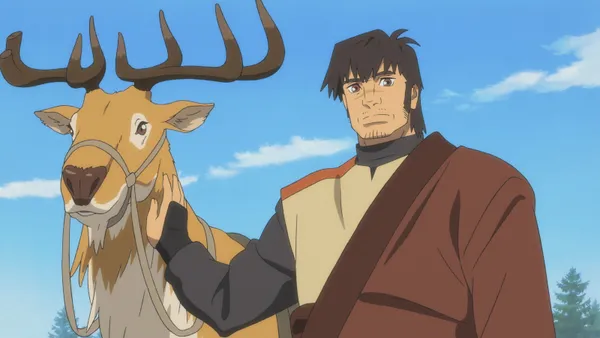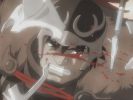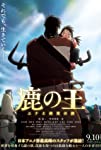Eye For Film >> Movies >> The Deer King (2021) Film Review
The Deer King
Reviewed by: Andrew Robertson

In much the same way that Le Nuit Des Rois should perhaps more properly be The Night of Kings rather than Night of the Kings, The Deer King is actually King Of Deer. Not just deer have kings, there are Emperors and their Eyes, ossam dogs that are at least analogous to wolves, and lots of exposition.
Based on a series of novels, there's a lot of world building not left to visuals. In the opening there are references to the nations of Aquafa, Zol, to Black Wolf Fever. The Aquafaese and the Zolians have been at war, a stalemate reached by the influence of the mittsual, a deadly fever that affects one and not the other. Ten years of peace are threatened by the return of the disease, brought in the wake of dog attacks.

The raid upon a prison salt mine by those baleful unstriped hounds is nightmarish, but we've been given the conditions of that underground first. Van, our protagonist, is strong, compassionate, bearded, wounded. Through flashbacks, and not just of his own recollection, we learn more about how he came to be here. The process of his leaving is equally brutal.
Directed by Masashi Ando, this is absolutely gorgeous. Having served as character designer for many previous animated fantasies, including Princess Mononoke the quality of these characters is almost palpable. For sure there are the tendencies of anime, rosy cheeks and kawaii eyes, implications of broken noses and shortcomings shuffled through stature and stance. Masayuki Miyaji has a similarly credible animation pedigree, co-direction is hard to credit but however their duties have been balanced they have shown something that is at times wondrous to look upon.
An early ladder twists towards the heavens like a ribbon of life itself, but the tragicomic beat of it being cleared has humorous impact. There are distinct styles of architecture, ornament, ritual, montages for training and travel, all create a sense of place and places that feels real in that way that only animation can.
Taku Kishimoto, who has written/adapted this for the screen, has a history in TV, and this perhaps shows in the pacing. The parent novels by Nahoko Uehashi are, it would seem, dense. Sufficiently so that when the series of two was reprinted her works were split into four volumes. Here that density of idea at times becomes spotty, that vapour of nuance condensed into cold and clumsy drops of detail.
I was minded of Dune, and not just because there's a doctor notionally independent of the petty politics of these warring states. There are complex balances of modernities, there is a name for riding deer, tribes, airships, centrifuges, transfusions and traditions. There is an attempt to strike a balance between what feels like Cartesian dualism and a unity of life somewhat like The Force. To separate mind and body and suggest that they are both also one is a feat of prestidigitation if not transubstantiation but it is perhaps worthily described as 'Inside Out'. I was also minded of Dune because this feels like an adaptation that is laden with the literary.
Our point of view changes, our narrator, there's a sense at one scene that what we have seen has been recorded much like that There And Back Again of B Baggins. There are in a couple of scenes something like a chessboard with delicately balanced pieces falling to each other and that multiplicity of mechanisms and preponderance of pieces seems apposite.
There's a lot going on, to the extent that over the credits there is aftermath, a coda (if not a conclusion) at their close. There are terms of art and background, beyond the art and backgrounds. A village in ruins is wrapped around a crossroads like a body, a fight in a foggy forest has all the magic of Crouching Tiger, Hidden Dragon. For all its beauty though, it labours.
There are central mysteries where the audience have sufficient clues to unravel them and do so far in advance of the characters vexed by them. There are revelations that feel from left field, or at least Fire Horse Village. There are in the montage and other moments elements reiterated until their subtlety is lost. That the pacing feels at times both slow and episodic might suggest that this had been intended not as a single feature but a series, but it might also be born from the fact that it was adapted from a series and not a single novel. Or, at least, a work in two (or four) parts and not one.
Adaptation is not easy, translation less so. Subbed and not dubbed, as one reads but not hears, the issues are not in tone or text but time. On a more extensive canvas it might have time to tie off threads at both ends, rather than their sudden appearance needling. Yet as a larger work it would probably be constrained to a smaller screen, and these are landscapes that envelop and embrace. The Deer King, King of Deer, perhaps does what it sets out to which is tell a story that looks incredible. That it feels like a screen to the story behind it is an issue of adaptation, but not one of ambition.
Reviewed on: 19 Aug 2021If you like this, try:
Detective Dee And The Mystery Of The Phantom FlameThe Killing Of A Sacred Deer
The White Reindeer


















